Today’s Current Affairs: 15th September 2025 for UPSC IAS exams, State PSC exams, SSC CGL, State SSC, RRB, Railways, Banking Exam & IBPS, etc
Table of Contents
Certificate of Deposit:

Issuance of certificates of deposit (CDs) by banks has fallen sharply in the last few months, pushing mutual funds to explore alternative money market instruments such as treasury bills and commercial papers to park funds.
- Certificate of Deposit (CD) is a fixed-income financial tool that is governed by the Reserve Bank of India (RBI) and is issued in a dematerialized form.
- It is a type of agreement made between the depositors and the banks, wherein the bank pays an interest on your investment.
- It is a short-term investment that comes with fixed investment amounts and maturity tenure ranging between 1-3 years.
- A CD in India can be issued for a minimum deposit of Rs. 1 lakh or in subsequent multiples of it.
- CDs are issued by the Scheduled Commercial Banks (SCBs) and All-India Financial Institutions.
- The Cooperative Banks and the Regional Rural Banks (RRBs) are not eligible for issuing a CD.
- It is issued to individuals, corporations, companies, and funds, among others.
- CDs could also be issued to NRIs but on a non-repatriable basis only.
- The maturity period of a CD can range between 7 days and 1 year when issued by commercial banks.
- However, for other financial institutions, the maturity period ranges from 1 year to 3 years.
- CDs are offered at discount rates or floating rates, depending on the banks’ requirements.
- A CD offers a higher interest rate than savings accounts or some other fixed-term financial products.
- CDs in dematerialised form can be transferred through endorsement or delivery, similar to dematerialised securities. This feature enhances the liquidity and ease of transactions for CDs.
- Unlike some other financial instruments, there is no lock-in period for a CD. This flexibility allows investors to access their funds or reinvest after the agreed-upon term without restrictions.
- Since CDs do not have any lock-in period, CDs cannot be used as collateral, and banks can’t buy back their own CDs before maturity.
- Banks have to maintain the statutory liquidity ratio and cash reserve ratio on the price of a CD.
- A CD is fully taxable under the Income Tax Act.
- A CD cannot be publicly traded.
Bairabi-Sairang Rail Line:
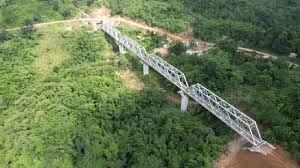
The Prime Minister recently inaugurated Mizoram’s first-ever railway line, the Bairabi–Sairang broad-gauge project, marking a historic moment in the state’s connectivity journey.
- Bairabi-Sairang Rail Line extends connectivity from Bairabi on the Assam–Mizoram border to Sairang, just 20 km from Aizawl (capital of Mizoram), directly linking the state capital with India’s railway network for the first time.
- With the new connection, Aizawl becomes the fourth northeastern state capital linked to the national railway network after Guwahati, Agartala, and Itanagar.
- The Bairabi–Sairang line stretches 38 km, running through some of the most challenging and hilly terrain in the Northeast.
- The project includes 48 tunnels, 142 bridges (55 major and 87 minor), and multiple road overbridges and underbridges.
- Notably, Bridge No. 196 stands 104 meters tall- taller than Delhi’s Qutub Minar- making it the highest bridge in the state and the second-highest pier bridge in Indian Railways.
- The total length of tunnels in this project is 12,853 meters.
- The passenger trains can run at speeds of up to 100 kmph on the newly built rail line.
- The line was built at a cost of over Rs 8,070 crore.
National Botanical Research Institute: New Research
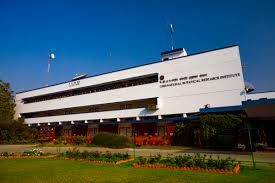
The National Botanical Research Institute (NBRI) recently achieved a breakthrough by cultivating the exotic flower, Eustoma, native to Mexico and America, in Odisha after successfully growing it on its campus in Lucknow.
- National Botanical Research Institute (NBRI) is amongst one of the constituent research institutes of the Council of Scientific and Industrial Research (CSIR).
- It is located in the city of Lucknow, Uttar Pradesh.
- It is a multi-disciplinary plant research centre of international repute, undertaking basic and applied R&D programmes in several strategically important areas of plant sciences.
- Originally set up as the National Botanic Gardens (NBG) by the State Government of Uttar Pradesh (U.P.), it was taken over by the CSIR in 1953.
- Though initially engaged in research work in the classical botanical disciplines, the NBG went on laying an increasing emphasis, in keeping with the national needs and priorities in the field of plant sciences, on its applied and developmental research activities.
- NBG was renamed as the NBRI,e., The National Botanical Research Institute in 1978.
- Objectives is Basic and applied research on plant diversity and prospection, plant-environment interaction and biotechnological approaches for plant improvement.
- The NBRI R&D department has seven divisions under which they conduct various researches. ]
- CSIR-NBRI has a well-designed Botanic Garden spread over 25 hectares with documented collections of about 5,000 indigenous and exotic plant species and varieties.
- It has an herbarium with 253,103 reference collections of flowering and non-flowering plants of India and two field research stations at Banthra.
- The institute is known for its outstanding contributions to enriching the knowledge base on India’s plant diversity, particularly in developing globally competent biotech and microbial technologies, herbal products, and plant databases.
STAR Missile:
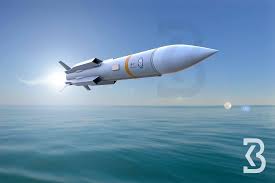
STAR ends India’s dependence on expensive imported target systems for missile training.
- The Supersonic TARget (STAR) missile is an indigenous, high-speed missile designed to simulate realistic threats for training India’s armed forces.
- It was developed by the Defence Research and Development Organisation (DRDO).
- Unlike combat missiles, STAR doesn’t aim to destroy enemy targets—instead, it mimics the enemy, helping our forces practice interception in real-time.
- The STAR missile is engineered to simulate the behavior of modern supersonic anti-ship missiles and cruise missiles.
- To serve different combat needs, DRDO is developing STAR in two variants:
- Air-Launched STAR: Carried by fighters like the LCA Tejas, it simulates air-to-air and air-to-ground strikes, including Anti-Radiation and Anti-AWACS roles.
- Ground-Launched STAR: Truck-mounted and mobile, this version can be deployed from shorelines or remote zones without expensive infrastructure, making it highly versatile for Navy and Army drills.
- At the heart of STAR is a two-stage propulsion system:
- Solid booster rocket for quick lift-off
- Liquid Fuel Ramjet (LFRJ) for sustained supersonic flight
- Max Speed: Mach 1.8 – 2.5.
- It operates across a wide altitude range from 100 meters to 10 kilometers, with an operational range of 55 to 175 kilometers.
Amrit Sarovar Mission : Data
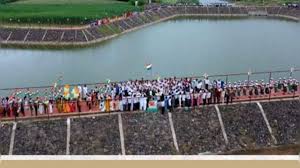
The Government recently informed that over 68 thousand ponds have been created under the Amrit Sarovar Mission.
- It was launched in April 2022 to construct or rejuvenate 75 Amrit Sarovars (ponds) in each district of the country as a part of the celebration of Azadi ka Amrit Mahotsav.
- It helps to overcome the water crisis in rural areas of the country.
- Every Amrit Sarovar will have a pondage area of at least 1 acre with a water holding capacity of about 10,000 cubic metre.
- Every Amrit Sarovar will be surrounded by trees like Neem, Peepal, and Banyan, etc.
- Every Amrit Sarovar will be a source of generation of livelihoods by using the water for different purposes like irrigation, fisheries, duckery, cultivation of water chestnut, water tourism, and other activities.
- The Amrit Sarovar will also act as a social gathering point in that locality.
- The site of Amrit Sarovars will be approved by special Gram Sabha, which will also name Panchayat Partinidhi, who will supervise the development of Amrit Sarovar on its behalf.
- It focuses on water conservation, people’s participation, and proper utilization of soil excavated from the water bodies to boost infrastructure projects.
- It is based on the “Whole of Government” approach with the participation from the Ministry of Rural Development, Ministry of Jal Shakti, Ministry of Culture, Ministry of Panchayati Raj, Ministry of Environment, Forest & Climate Change, and technical organizations.
- There is no separate financial allocation for Mission Amrit Sarovar.
- Mission Amrit Sarovar works are being taken up by the states and districts with convergence from various ongoing schemes such as Mahatma Gandhi NREGS, 15th Finance Commission Grants, Pradhan Mantri Krishi Sichayi Yojna sub-schemes such as the Watershed Development Component, Har Khet ko Pani, besides States’ own schemes.
Brown Trout:
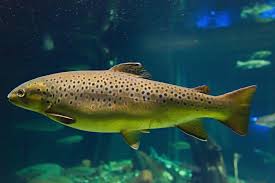
The Kashmir fisheries department plans to reintroduce the Brown trout back into the Valley for game.
- The brown trout (Salmo trutta) is a species of salmonid ray-finned fish and the most widely distributed species of the genus Salmo.
- It has been widely introduced globally as a game fish.
- It is one of the world’s worst invasive species outside of its native range.
- It is a cold-water fish that prefers cool and well-oxygenated water.
- It is best suited to freshwaters; this fish spends much of its time in crevices between boulders in streams.
- It usually growing to between 15 and 22 inches in length and between 1 and 5 pounds, the trout is considered a popular game fish.
- Breeding Season: The October/November is the breeding season for this fish.
- The native range extends from northern Norway and White Sea tributaries in Russia in the Arctic Ocean to the Atlas Mountains in North Africa.
- The western limit of their native range is Iceland in the north Atlantic, while the eastern limit is in Aral Sea tributaries in Afghanistan and Pakistan.
- In India, the British first introduced the brown trout in the Valley’s streams in 1900.
- Conservation Status: Least Concern (IUCN Red List)
AI-based Weather Forecasting Program:

The Ministry of Agriculture and Farmers’ Welfare (MoAFW) launched AI-based monsoon forecasts via SMS (m-Kisan) to nearly 3.8 crore farmers across 13 states this year.
- AI-Based Weather Forecasting Program was launched by the Ministry of Agriculture and Farmers’ Welfare.
- Under this initiative AI-based monsoon forecasts was sent using m-Kisan portal.
- This is the first-of-its-kind targeted dissemination of AI weather forecasts to date.
- These AI-based forecasts distributed by the MoAFW correctly identified 20 days’ pause in monsoon progression.
- The government sent updated information to farmers every week until continuous rains arrived in their area.
- The forecasts used were a blend of two open-access models—Google’s Neural GCM and European Centre for Medium-Range Weather Forecasts’ (ECMWF) Artificial Intelligence Forecasting Systems (AIFS).
- It centers specifically on the needs of farmers by providing tailored weather forecasts in easy to understand language and helps them make informed farming decisions.
Exercise Siyom Prahar:
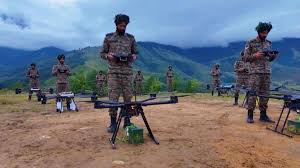
The Indian Army successfully conducted Exercise Siyom Prahar.
- Exercise Siyom Prahar is a major field training exercise conducted by the Indian Army.
- It is aimed at validating the employment of drone technology in modern tactical operations.
- It was held under realistic battlefield conditions and marked “a significant step in operational preparedness” by integrating unmanned aerial systems across tactical and operational depths.
- The drones were employed for persistent surveillance, battlefield reconnaissance, target acquisition and precision strikes, underscoring their role in enhancing combat effectiveness.
- The central focus of the exercise was the development and validation of new Tactics, Techniques and Procedures for future battlefields.
- It included methods of fusing drone-derived intelligence with conventional firepower, refining joint targeting processes and ensuring rapid decision-making in dynamic combat environments.
Erra Matti Dibbalu:
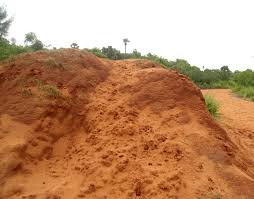
Andhra Pradesh’s Erra Matti Dibbalu (Red Sand Dunes) have been included in the UNESCO Tentative List of World Heritage Sites.
- Erra Matti Dibbalu, also known as the Red Sand Dunes is located along the coast near Visakhapatnam in Andhra Pradesh.
- It was first documented by British geologist William King in 1886, these formations are regarded as rare coastal geomorphological features.
- Erra Matti Dibbalu is composed of sand, silt, and clay, with their distinct reddish hue resulting from natural oxidation over thousands of years.
- The uniqueness of this site is that the red sediments are a part of the continuation of the evolution of the earth and represent the late quaternary geologic age.
- They exhibit badland topography with different geomorphic landforms and features, including gullies, sand dunes, buried channels, beach ridges, paired terraces, the valley in the valley, wave-cut terrace, knick point and waterfalls.
- It is a lively scientific evolution site, which depicts the real-time effects of climate change.
- The site also has archaeological significance, as studies of artefacts indicate an Upper Palaeolithic horizon and on cross dating assigned to Late Pleistocene epoch, which is 20,000 BC.
- The site contains dendritic drainage patterns and sediment layers that record fluctuations in sea level and climatic changes over the late Quaternary period.
Red Ivy Plant:
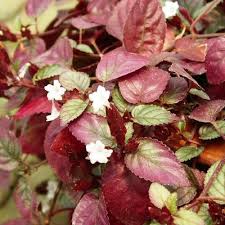
Scientists at JNTBGRI, Kerala have developed a multifunctional wound-healing pad using the red ivy plant (Strobilanthes alternata), combining traditional knowledge with nanotechnology.
- Red Ivy Plant (Murikooti Pacha) is a tropical medicinal plant widely known for its wound-healing properties and used in indigenous medicine.
- Scientific Name: Strobilanthes alternata (Family: Acanthaceae).
- It Grows abundantly in tropical regions including India, Sri Lanka, and Southeast Asia.
- Found in moist forests and shaded rural areas; thrives in Kerala’s Western Ghats ecosystem.
- Key Features:
- Appearance: Spreading vine-like plant with red-green leaves.
- Bioactive Compound: Acteoside – proven antioxidant, anti-inflammatory, and antimicrobial agent.
- Sustainability: Easily cultivable, ensuring large-scale availability for medicinal use.
Amritsari Kulcha : GI Tag

Punjab’s Food Processing Department is seeking a Geographical Indication (GI) tag for the iconic Amritsari Kulcha.
- Amritsari Kulcha is A stuffed, flaky tandoori flatbread made with refined flour (maida), fermented with yogurt and leavening agents, baked in a clay oven.
- Served with chhole, tamarind chutney, pickled onions, and topped with butter or ghee, forming a signature Punjabi breakfast dish.
- Influences from khameeri roti fermentation and possibly colonial-era layering techniques gave it its distinct flakiness.
- Features:
- Low-temperature tandoor baking allows slow ghee melting for signature crispiness.
- Local ingredients, water quality, and multi-layered rolling technique add to its unique texture and taste.
- Punjab is spearheading the GI tag proposal through its Food Processing Department.
- Amritsar, called the “Kulcha Capital of India”, is the main centre, with popular outlets like Kesar Da Dhaba and Bhai Kulwant Singh Kulchian Wale.
Bhadohi’s handmade carpet industry: Crisis
Bhadohi’s handmade carpet industry contributing over 60% of India’s carpet exports is facing a severe crisis due to the U.S. imposing a 50% tariff on Indian goods, leading to order cancellations, production cuts, and job losses.It Is Carpet weaving is a traditional handcraft where wool, silk, or cotton threads are knotted or tufted on looms to create decorative and durable floor coverings. Bhadohi–Mirzapur belt in Uttar Pradesh is globally known as “Carpet City” and is India’s largest hand-knotted carpet cluster.These carpets are highly durable and known for intricate, detailed patterns, often taking 3–6 months to weave depending on size and complexity.
APEDA Opens First Regional Office in Bihar:
Piyush Goyal inaugurates APEDA’s first Bihar office in Patna, boosting the state’s agri-export potential with global market access for farmers and entrepreneurs.. Bihar’s presence on the global agricultural export map, Union Commerce and Industry Minister Piyush Goyal inaugurated the first regional office of the Agricultural and Processed Food Products Export Development Authority (APEDA) in Patna. The move, announced during the Bihar Idea Festival, is expected to provide farmers, exporters, and entrepreneurs direct access to APEDA services, eliminating dependence on the Varanasi office.
Goa to Host Historic 10th Ayurveda Day:
Goa to host the 10th Ayurveda Day on 23rd Sept 2025 at AIIA with the theme “Ayurveda for People & Planet,” marking a global push for sustainable healthcare. Theme “Ayurveda for People & Planet”, the celebration reflects the growing recognition of Ayurveda as both a healthcare solution and a sustainable practice aligned with modern environmental needs. For the first time, Ayurveda Day will be observed on a fixed calendar date, departing from the earlier practice of celebrating it on Dhanvantari Jayanti. This move signifies an effort to bring consistency and greater visibility to Ayurveda on the international stage.
PM Modi To Launch ₹71,000 Cr Projects in 5 States:
PM Modi to inaugurate and lay foundation of projects worth ₹71,000 crore across Mizoram, Manipur, Assam, West Bengal, and Bihar during September 13–15.He will inaugurate and lay foundation stones for development projects worth over ₹71,000 crore, spanning railways, roadways, energy, healthcare, education, and infrastructure. The projects highlight the government’s push for regional connectivity, industrial growth, and inclusive development
Asian Giant Tortoise Breeding at Manipur Zoo:
The Manipur Zoological Garden (MZG), in partnership with the India Turtle Conservation Programme (ITCP), has carried out the first successful artificial incubation of Asian Giant Tortoises (Manouria emys phayrei). A total of 28 hatchlings emerged from a single nest in 2025, marking a crucial step in protecting one of the world’s most threatened reptile species.
The Asian Giant Tortoise is the largest tortoise species in mainland Asia. It is,
Scientific name: Manouria emys phayrei
Status: Critically Endangered (IUCN Red List)
Native habitat: Northeast India (Manipur, Nagaland, Mizoram, Assam, Meghalaya) and parts of Southeast Asia
Threats: Habitat loss, hunting for meat, and illegal wildlife trade
India Backs UNGA Resolution on Palestine Two-State Solution:
India voted in favour of a United Nations General Assembly (UNGA) resolution endorsing the “New York Declaration” on the peaceful settlement of the Palestine issue through the two-state solution. The resolution was passed on September 12, 2025, with 142 countries supporting, 10 opposing, and 12 abstaining. This vote reaffirms India’s long-standing position on the Israeli-Palestinian conflict, supporting the creation of a sovereign, independent, and viable State of Palestine, coexisting peacefully with a secure State of Israel within recognized borders.
Indian Navy Commissions INS Aravali at Gurugram:
On 12th September 2025 the Indian Navy marked a significant milestone with the commissioning of INS Aravali at Gurugram, in the presence of Admiral Dinesh K Tripathi, Chief of the Naval Staff (CNS). The new base is designed to strengthen India’s information dominance, communication networks, and maritime security capabilities.Named after the resilient Aravali mountain range, INS Aravali symbolizes strength, vigilance, and endurance—qualities that align with the Navy’s mission of ensuring maritime security in an evolving strategic landscape.
Retail Inflation Inches Up to 2.07% in August:
India’s retail inflation, measured by the Consumer Price Index (CPI), rose to 2.07% in August 2025, up by 46 basis points from the revised 1.61% in July. Despite the increase, the inflation rate remains well below the Reserve Bank of India’s (RBI) 4% target, providing relief for households and room for accommodative monetary policy. The latest data, released by the Ministry of Statistics and Programme Implementation (MoSPI), reflects a marginal uptick driven primarily by food and essential items.Urban inflation: Increased to 2.47%, Rural inflation: Rose to 1.69%.
Navy Inducts Tata-Made Spanish 3D Radar:
The Indian Navy has commissioned its first Tata-made Lanza-N 3D Air Surveillance Radar. The radar, a naval variant of Spanish firm Indra’s Lanza 3D system, was built and integrated by Tata Advanced Systems Limited (TASL) under a USD 145-million deal signed in 2020. This marks a significant milestone in India’s defence indigenisation and self-reliance drive.
Key Features
Range: Detects aircraft from 9 km to 474 km
Altitude coverage: Up to 100,000 feet
Rotation speed: Completes one full rotation in 10 seconds, ensuring continuous situational awareness
Adaptation: Specifically modified for high humidity and extreme heat of the Indian Ocean Region
AIIMS First Govt College to Train on da Vinci Robot:
The All India Institute of Medical Sciences (AIIMS), New Delhi, has achieved a historic milestone by becoming the first government medical college in India to offer training on the da Vinci Robotic Surgical System. The installation was made at AIIMS’ Skills, E-Learning and Telemedicine (SET) Facility, marking a significant leap in medical education and surgical innovation in the country.The da Vinci Surgical Robot, developed by Intuitive Surgical, is one of the world’s most advanced robotic platforms for minimally invasive surgery. It enhances precision, dexterity, and control for surgeons.
Key Features:
Allows surgeons to perform complex procedures with small incisions.
Provides 3D, high-definition visualization.
Improves patient recovery time and reduces hospital stays.
Widely used in urology, gynecology, general surgery, oncology, and head & neck surgery.




